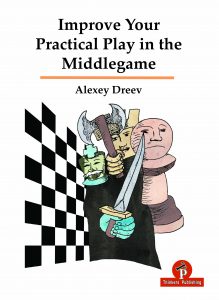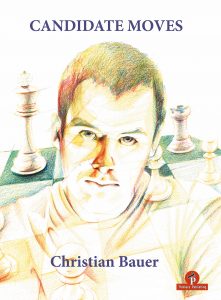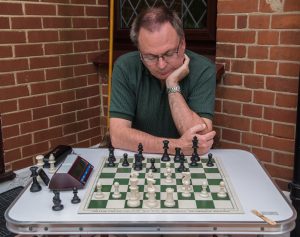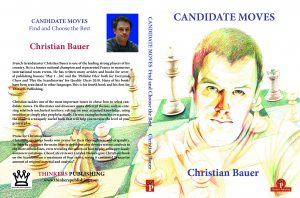Improve Your Practical Play in the Middlegame : Alexey Dreev

“Before the endgame the gods have placed the middlegame.” – Dr. Seigbert Tarrasch

From Wikipedia :
Alexey Sergeyevich Dreev (Russian: Алексей Сергеевич Дреев; born 30 January 1969[1]) is a Russian chess player. He was awarded the title Grandmaster by FIDE in 1989
This concise but dense book covers a range of middlegame ideas, but not the standard set you find in many other volumes. The backcover rubric says: “…Alexey…believes that through careful reading and study of his book, any player regardless of level will significantly improve their skills. Even if you are unable to solve some of his exercises, they will still be of great use for improving your understanding of chess.
Alexey considers that his book will be useful for both club and professional chess players.” Allowing for a little publisher’s rhetoric, this tells you that this isn’t an easy read and you’ll have to work hard to reap the benefits, which I think is an accurate assessment.
The book is split into six sections, the first five each containing an introduction, followed by examples from real games, including positions where the ideas don’t work (rigorous analysis is the watchword throughout), then exercises and solutions. In the final chapter seven games demonstrating ideas from the first five chapters are analysed in detail.
The ‘Practical Play’ aspect of the title are found in the example solutions, some of which to lead to a clear advantage, but many are far less prescriptive in their outcome (”with compensation for the exchange”, for example).
There are a few minor idiosyncrasies in the English, but nothing to trouble the scorers.
Here is an illustrative example from the Pawn Sacrifice chapter which gives a flavour of the book:-
From Ivanchuk-Kasparov, Linares 1991
This is a case where the knights are stronger than the bishops due to the specific nature of the pawn structure. Black’s problem is the absence of counterplay. As the further course of the game showed, White achieved a convincing victory.
But this is thebeauty of chess, that sometimes there are incredible defensive resources in a position which are hidden at first glance
15…Qc7
In the game Black played 15…a5, by means of which he gets a transfer point for his heavy pieces, the c5-square, but this does not bring relief. 16.b5 Qc7 17.Nd2 Qc5 18.Qd3 Rg8 19.Rae1±. White has many ways to enhance his position, e.g., by advancing the f-pawn. It is difficult to recommend anything for Black. 1-0 (38)
16.Nd2 d5!!
Only here and now, otherwise it will be too late!
17.exd5 Qe5!
I admit these moves do not lead to complete equality, but thanks to the pawn sacrifice, Black no longer feels besieged and doomed to a long defence. His bishops are gradually awakening from hibernation, and this gives him solid compensation for the sacrificed pawn.
18.Qxe5
18.Qd3 Bxb4 19.Rac1 Kf8∞
18…fxe5 !9.Rab1 f5!
Another important move!. Black limits the knights and prepares to connect his rooks with …Kf7, when his King will clearly be better placed than its counterpart and his pieces will gain in activity.
Black can expect compensation.
In summary, this is an excellent but difficult book, and you’ll require some pretty decent analytical chops to assess whether the ideas it covers may be sometimes applicable in your own games.
Mark Taylor, Windsor, Berkshire, July 2019

Book Details :
- Paperback : 208 pages
- Publisher: Thinkers Publishing (8 Sept. 2018)
- Language: English
- ISBN-10: 9492510316
- ISBN-13: 978-9492510310
- Product Dimensions: 16.5 x 1.9 x 22.9 cm
Official web site of Thinkers Publishing





